The Legislature’s Fiscal Year (FY) 2023 budget released earlier this week by the Conference Committee differs dramatically from both the House and Senate proposals in part because of its larger bottom line. The Governor, House, and Senate budget proposals were based on an estimate of $36.92 billion in tax collections for FY 2023. This new budget proposal, a compromise between the House and Senate proposals, estimates tax collections of $39.58 billion, an increase of $2.66 billion or 7.2 percent.
Since the onset of the pandemic, policy makers have been cautious about revenue estimates. This recent upward revision does not necessarily reflect a new optimism about the state’s economy, but it is important as an acknowledgement of actual tax collections exceeding previous estimates. With the additional revenue, the Conference Committee was in many instances able to propose funding line items at the higher of the recommendations from the House or the Senate.
This more generous revenue estimate also allows for a small step towards addressing the potential impact of the recent inflation spike on the costs of everything funded by the budget. Much of the state budget goes to supporting salaries – teachers, child care providers, transit workers, human service and other direct care workers, nursing home staff, the state employees who answer the phones when people are looking for services. Some of these are state employees, and many are employees of independent organizations and businesses that contract with the state. These workers whose jobs rely on public funding will certainly feel the pinch of inflation as even this more-generous budget may not be enough to cover their rising costs for food, rent, or other basic needs.
Below are selected highlights from the Legislature’s budget in education, local aid, transportation, and more.
- $1.18 billion for early education and care, including new funding totaling $250 million as recommended by the Senate for Commonwealth Cares for Children (C3) stabilization grants and workforce supports. There is also a new $25 million appropriation to support outreach, funding for child care costs for the early educators’ own children, and for the review of how child care subsidies work. This could lead towards funding based on classroom enrollment numbers, rather than funding based on actual attendance. This is a reform that child care providers believe could significantly improve stability in the early education workplace.
- $110 million to support universal free school meals for all students across the state. This highly successful program began during the pandemic supported by federal funding, and will require further investment of state and/or federal funds to continue through FY 2023. Continuing this support for public schools would help ensure that no children in classrooms across the state face the challenges of learning on an empty stomach.
- $9.7 million for school districts whose funding is based on what is known as “minimum aid.” These districts will see their funding increase from $30 per pupil to $60.
- $15 million for a new program to encourage public higher education graduates to choose to work as educators in the public schools, including support for scholarships and student loan repayments.
- $1.62 billion for higher education, including $15 million to increase financial aid for students at the University of Massachusetts.
- $1.23 billion for local aid, the level recommended by the Senate and $32.5 million more than recommended by the House. This higher level is important for municipalities looking to fund vital local services such as fire protection, playgrounds, and public works. Even so, this increase is not enough to cover the cost of inflation over the past year.
- $266 million to support safety and workforce challenges at the Mass. Bay Transit Authority (MBTA). This initiative, not included in either the House or Senate budget proposals, would support the authority’s responses to recent federal findings about safety and operations at the MBTA.
- $2.5 million in grants as proposed by the Senate for fare free or means-tested discount fare pilot programs at Regional Transit Authorities.
The Legislature’s budget includes other important initiatives that will expand benefits for lower-income people in the Commonwealth. Some of these are:
- A 10 percent increase in the grants for people participating in the Transitional Aid to Families with Dependent Children (TAFDC) and Emergency Aid to the Elderly, Disabled, and Children (EAEDC) programs. There is also an increase in the annual child clothing allowance for eligible families. These increases are critical for families struggling with making ends meet in a time of rising costs.
- A two-year pilot expansion of the state’s ConnectorCare health insurance program would bring subsidized health insurance coverage to approximately 37,000 additional residents up to five times the federal poverty level (an annual income of about $68,000 for individuals.)
- Ongoing and continued expansion of behavioral health services, including a new trust fund to help create a community-based system for behavioral health.
- Expanded funding for housing supports and assistance for people experiencing homelessness, as much as 20 percent over funding in FY 2022. Nevertheless, the pandemic, inflation, and an ongoing housing crisis have hit hardest the people whose housing was precarious to start with. Even with the more generous funding levels in the Legislature’s budget, affordable, stable, and safe housing is still out of the reach of many.
In addition to these appropriations, the budget creates several special trust funds as a way to set aside funds that would be appropriated later. Money sent to these funds is not part of the budget appropriations bottom line as they function like holding funds to be spent later. These include:
- $175 million for a new trust fund to support high quality early education and care. This funding is set aside in a trust fund for later appropriation and will be an important down payment on efforts to move towards universal high-quality and affordable child care across the state. This funding is in addition to line item appropriations and not included in the budgeted total.
- $150 million to support implementation of the Student Opportunity Act. This funding is set aside in a trust fund to support K-12 education, but will be appropriated later. This funding is in addition to line item appropriations and not included in the budgeted total.
Even with this budget compromise that funds programs sometimes at levels higher than either the House or Senate proposed, because of the expected increase in tax collections in FY 2023, the Legislature has included a deposit of more than $1.47 billion into the state’s Stabilization Fund (the “Rainy Day Fund”). This is a fiscally prudent decision that shores up resources in anticipation of an inevitable but unpredictable economic downturn. This total includes almost $1.4 billion in anticipated capital gains tax revenue as well as required deposits from several other sources.
Finally, it is important to view the FY 2023 state budget in the context of declining federal COVID relief dollars. Massachusetts received more than $115 billion in the form of direct payments to individuals, support for businesses and organizations, and grants to state agencies and community groups. All of this federal support put money in people’s pockets and in turn buoyed the economy and helped boost tax collections. But much of this federal money is temporary and the related tax surplus is also likely temporary.
The Legislature is currently debating an economic development bill into which they have inserted various proposals. Several proposed tax breaks would help low- and middle-income households and would be important for advancing economic equity. On the other hand, temporary tax “surpluses” are not an excuse for implementing deep and lasting tax cuts for the state’s wealthiest households, such as some of the proposals to change the state’s estate tax. These kinds of upside-down proposals make our state’s widening income inequality worse, not better. And they could put at risk future years’ budgets with the reduction in an ongoing revenue source.





